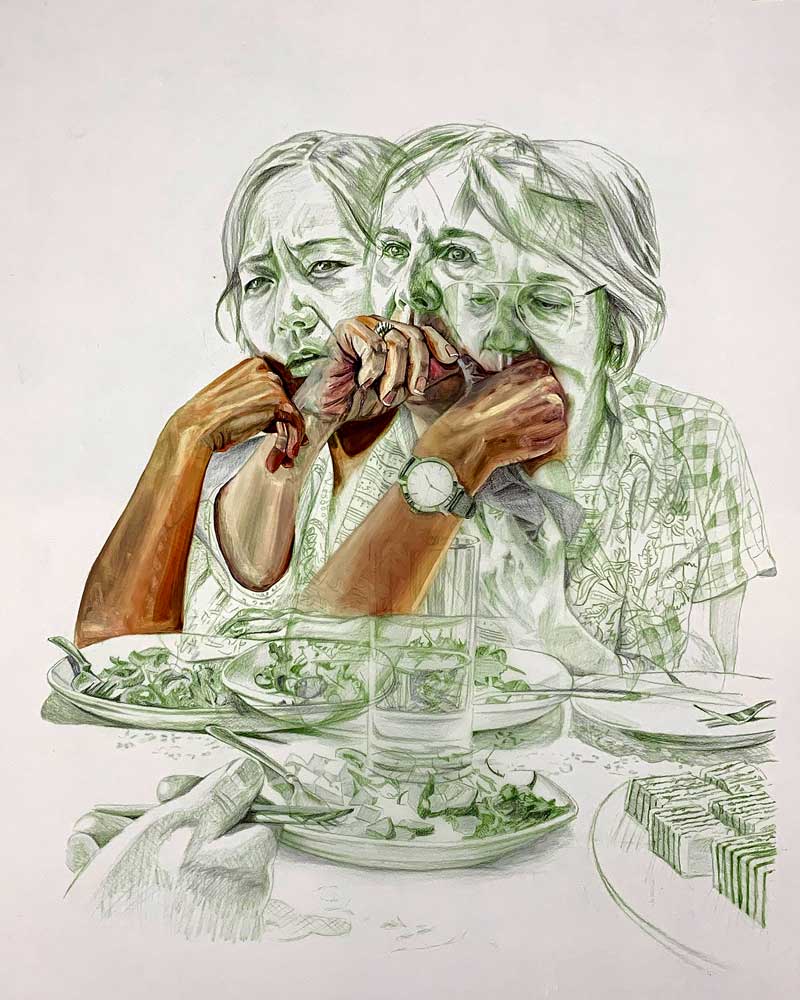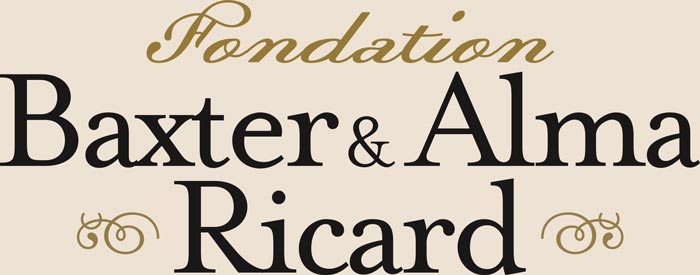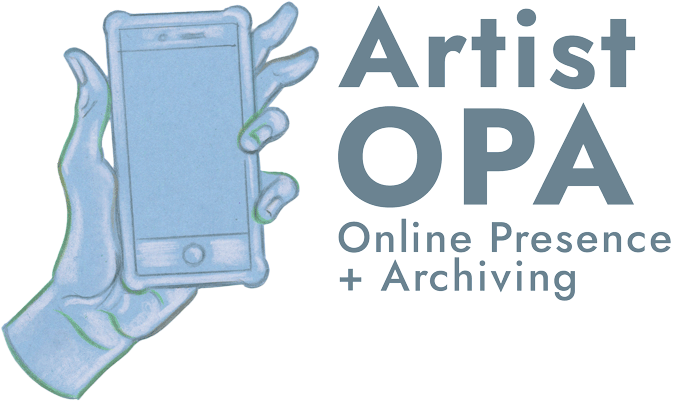D.2 Nonlinear Dynamics in the Research-Creation Methodology
Fri Oct 20 / 15:15 – 17:00 / KC 204
chair /
- David Biddle, Simon Fraser University
In this panel I would like to bring together artists and scholars from various disciplines for a dialogue on epistemology, with the aim of developing a richer understanding of the relationship between art practice and academic research. Within this broad context, the panel would be oriented more specifically toward understanding the irreducible nature of the truths which artworks can communicate. As such, the practical outcome of the panel would be to further develop the language around the integration of creative practice into academic research, while explicitly resisting the expectation that the fruits of creative practice are always, if ever, reducible to academic language. Ultimately, I hope that this panel might serve to articulate new ways for “interdisciplinary’ and “research-creation’ models to be implemented in the university in an effort to ensure that the production of aesthetic truth is not subordinated by institutional default to the production of linguistic truth.
keywords: research-creation, interdisciplinary, epistemology, aesthetics, institutional critique
session type: panel
Dave Biddle (being me) is an artist and theorist (being susceptible to gnosis) who works with sound, video, text, and performance to excavate universal truths (being fictional). Dave Biddle (still being me) is interested in how the many different forms of life on earth (being metaphorically different) are all oriented toward the production of new expressions of meaning (being negentropic), and in this process some of those expressions emerge as something called an "artist bio" (being the ultimate expression). Dave Biddle (being the artist) was born in Vancouver (being the traditional territories of the Musqueam, Squamish and Tsleil-Waututh First Nations) and continues to live in that (being this) ancient place where he studies the silverfish in his books (being being).

Hand to Mouth: Ayumi Goto, Claire Tallarico, Shawna Dempsey, Lisa Wood. Coloured Pencil and Oil on Drafting Film, 36X30”, 2021
The problem with naming: A journey from artist to researcher and the uncomfortable relationship between art, academics, and research-creation
- Lisa Wood, Brandon University
I am a figurative painter, and I believe in the power of images. I’m driven by a desire to understand how people see themselves in the world; how art can facilitate connection and knowledge sharing to investigate collective and individual experiences with power, prestige, and exclusion. My research-creation pull comes from grappling to embody my story and the story of others through art making, social sciences and the humanities.
Recognizing gaps in my knowledge and methodology, I’ve sought out opportunities for cross-disciplinary collaboration to broaden my art practice by introducing qualitative research analysis. Through this I have experienced internal and external pressure to shape the language describing my art to speak more directly to academics and researchers, and felt the simmering stew of creative juices cooled off, dried up, or spat out by “more serious” researchers.
In this uncomfortable place I have turned to Natalie Loveless’ 2019 book How to Make Art at the End of the World, A Manifesto for Research-Creation. She describes research-creation within the context of Canadian universities and granting bodies as complex and messy, and advocates for connecting to the driving desire in your work (the Lacanian object petit a), while breaking down disciplinary boundaries. “It requires that one cultivate a robust capacity to follow curiosity and sit with anxiety.” (p.57)
In this paper I ask, what is my “object petit a” in research-creation work? How can I maintain the integrity of my practice, while making room for possibility in the collaborative research process?
keywords: research-creation; collaboration; methodology, figurative artwork
Lisa Wood is a visual artist and Associate Professor at IshKaabatens Waasa Gaa Inaabateg Department of Visual Art at Brandon University. Her art practice broadly investigates inclusion, marginalization and interpersonal connections. Her artistic lens is shaped by her upbringing as an only child of a single mother, and reflects her intersectional identities of cisgender woman and mother from a settler background living with chronic health conditions in rural Manitoba. Wood has an MFA from Yale University and a BFA from the University of Manitoba and has been the recipient of many awards and scholarships. She has exhibited her painting and prints nationally and internationally at venues such as: Alchemy Artist Residency (Prince Edward County, 2022 and 2021),The AGSM (Brandon, 2019); Estevan Art Gallery and Museum (Estevan, 2019); Neutral Ground (Regina, 2018) and Warte für Kunst (Kassel Germany, 2017).
Follow the Artists: Embodied Curation, Nomadic Becoming, and Knowledge Assemblages
- Joni Low, Simon Fraser University
What kinds of curatorial approaches invite art experiencers into the artistic process, so that they too might be transformed by the vitality of artistic research? How do these frameworks stimulate curiosities outside the academy, and with wider publics? Following the artists – to bend a slogan by Bruno Latour – is a tangential, rhizomatic, dialogic and transdisciplinary experience that frequently sends curators down the proverbial rabbit hole, particularly during the creation of new work. In my current doctoral research, artists’ references range from oral history and podcasts, ancient spiritualities and the occult, to psychedelia, soundscapes, collaborations with scientists, and lived experience.
For this panel, I will workshop my current research-creation exhibition, Resonance <> Consonance, which focuses on artists from minoritized perspectives who are sensing otherwise towards embodied ways of knowing, feeling, and remembering – and how these approaches resonate across somatic and spiritual practices, neuroscience, decolonization and healing. I will also discuss past curatorial methodologies to illustrate the non-linearity and rich academic potential of artistic research. Drawing from Rosi Braidotti’s critical and nomadic post-humanist approach, Laura U. Marks’ theorization of soul assemblages, and the development of concepts in my own curatorial practice, I maintain that artistic research is the fertile littoral between disciplines that will evolve human and other-than-human knowledges to greater potential. How to translate artistic research in accessible ways that convey its vitality, and create language that validates subjective, speculative, and experimental theories of knowledge, is key.
keywords: curatorial frameworks, artistic research, sensing otherwise, linguistic vitality
Joni Low is a writer and independent curator whose practice explores interconnection, intercultural conversations, and sensory experience. A SSHRC Doctoral Fellow at Simon Fraser University’s School for the Contemporary Arts, she is currently researching artists who are sensing otherwise to access different ways of knowing – and how these explorations resonate across neuroscience, somatic and spiritual practices, decolonization and healing. Low’s exhibition projects – with artists including Germaine Koh, Andrew Lee, Charles Campbell, Chloë Lum & Yannick Desranleau, Hank Bull, and Laiwan – have been presented across Canada. Her writing is published in exhibition catalogues and periodicals including Artforum, Canadian Art, ESPACE Art Actuel, and Yishu: Journal for Contemporary Chinese Art. In 2022 she released the anthology What Are Our Supports? – comprising 23 local and international artists and writers reflecting on supports during precarious times (co-editor Jeff O’Brien; publisher: Information Office). An editorial board member of The Capilano Review, Low has served on numerous juries including the VIVA Art Awards, Sobey Art Award, Lind Prize, and Emily Carr University Graduate Awards.
“Is it Really Important to Think?” If not, ‘Thinking as an Atelier.’
- Maj Britt Jensen, UBC Institute for Gender, Race, Sexuality and Social Justice
Ventriloquizing Michel Foucault’s words: “I am not a [en retraite] retired activist who, today, would like to re-enter the service. My mode of work has not changed very much; but what I expect from it is that it will continue to change me” (35). Neither am I a retired artist. Yet I must say that I do stumble upon the phrase: mode of work. Is it permissible for me to state that mine has not changed very much? My answer shifts, depending on whether “mode of work” means “method,” or rather something like a “mode of address.”
I will sport a kind of reading that is ‘shot through’ by ‘the trajectory’ of a meditative observational training derived from Bataillean endeavors as well as ‘the coming and going’ or ‘entering and falling out of composition’ marked by Foucauldian moments/sites/scenes/nexuses. Paraphrasing Dubilet on Bataille, I “[seek] to question the intransigent boundaries established to render those discourses [academic research and artistic practice] distinct, self-sufficient, and polemically antagonistic to each other (151). I doubt that although presented as solution — field or shield? — research-creation serves the purpose it thinks it does as it is imagined against the backdrop of institutional formats.
I will pursue a speculative study of the ways in which transfeminist, antiracist, anti-capitalist and anti-colonial processes of invention shift between modalities and targets, how they bind/anchor, ‘leave off’ and ‘break with’ ontology and/or epistemology. And I will theorize how they take care of the ‘nexus’ between bodies and institutions.
Works Cited: Dubilet, Alex. The Self-Emptying Subject: Kenosis and Immanence, Medieval to Modern. Fordham University Press, 2018. | Foucault, Michel. “Is It Really Important to Think? An Interview.” Translated by Thomas Keenan. Philosophy & Social Criticism, vol. 9, issue 30, April 1982, pp. 30-40.
keywords: transfeminist, antiracist, anti-capitalist and anti-colonial, processes of invention
In the twenty years of Maj Britt Jensen’s walk of life as contemporary artist and art educator, she has created art works and participatory art projects in/for public space, has been part of 3 art collectives and tens of artist collaborations, she has exhibited more than two dozen times internationally, in galleries, museums, and alternative spaces, in solo shows, site-specific projects, and groups shows, individually as well as collectively, she has performed, presented, and screened work more than two dozen times, in art-related events, educational and scholarly settings, she has worked with children and adults, art students and non-students, she contributed to radio-, video-, tv-programs, and/or to festivals, to publications in books and magazines, in written and in visual form, and she has taught more than three dozen courses, classes, workshops within institutional and non-institutional settings; her critical and creative public engagement is rich and varied.
Not Knowing as Making
- Donna Szőke, Brock University
As a mid-career artist and an Associate Professor of Studio Art, I am dumbfounded, thrilled, and delighted that my creative process begins with a central inscrutable impulse: I begin by not knowing what it is I am doing. Leaning further into my own process, the leap into the unknown is steered by a fuzzy intuitive sense of exploration, an unknown attraction, a sensing of what is present, potent, or desiring to become. This vague guiding principle has driven my art practice, yet intuition, speculation and other forms of innate knowledge are frowned upon as legitimate scholarly methodology.[1] Artist-scholars model that making is thinking “in its own right”.[2] Making art must be conjoined with a type of thinking, an intuitive not-knowing, to foster creative output. Art practice arises from experiential processes that are uncaptured by cognition yet stemming from affect.[4]
The Social Sciences and Research Council of Canada definition of research-creation doesn’t fully encompass the needs and processes of artist-scholars and other research-creationists.[6] Multiple modalities for research-creation exist including research-for-creation, research-from-creation, creative presentations of research, and creation-as-research.[8] My approach to research-creation most closely resembles creation-as-research and centres making as knowing, or more precisely, not knowing as making, and does not relegate artworks as secondary to scholarly text. Art making “creates the conditions for new ways of encountering study—forms and forces of intellectuality that cut across normative accounts of what it means to know”.[9] Not knowing as making invites, celebrates, dwells in the spaces that are not problems to solve, or absences to overcome, but fuel for studio practice: “failure, boredom, frustration and getting lost...wonder, secrets and play”.[10] How do I articulate my performance of not knowing as a form of thinking through making? How do we preserve the right to not know, to use not knowing as a foundational tenet of creative enquiry?
[1] Erin Manning, The Minor Gesture, Thought in the Act (Durham: Duke University Press, 2016), 42.
[2] Erin Manning, Minor Gesture, 28.
[3] Erin Manning, Minor Gesture, 40.
[4] Dennis Atkinson, “Pedagogy of the Not Known,” in On Not Knowing, ed. Elizabeth Fisher and Rebecca Fortnum (London: Black Dog Publishing, 2013), 141.
[5] Social Sciences and Humanities Research Council, Government and of Canada. Definitions of Terms, May 17, 2023.
[6] Natalie Loveless, How to Make Art at the End of the World: A Manifesto for Research-Creation (Durham: Duke University Press, 2019).; Owen Chapman and Kim Sawchuk, “Creation-as-Research: Critical Making in Complex Environments,” RACAR 40, no. 1 (2015): 49–52.; Erin Manning, The Minor Gesture, Thought in the Act (Durham: Duke University Press, 2016).; Erin Manning, Thought in the Act: Passages in the Ecology of Experience (Minneapolis: University of Minnesota Press, 2014).; Stéphanie McKnight, “Creative Research Methodologies for Surveillance Studies,” Surveillance & Society 18, no. 1 (2020): 148–56.
[7] Donna Szoke, “Researchify: Artists’ Research as Disruption.,” ISEA (International Society of Electronic Arts), 2015, 34.
[8] Chapman and Sawchuck, “Creation-as-Research”, 49.
[9] Manning, “Minor Gesture”, 27.
[10] Elizabeth Fisher and Rebecca Fortnum, eds., On Not Knowing: How Artists Think (London: Black Dog Publishing, 2013), 7.
keywords: research-creation, artists’ methodologies, not knowing, intuition, non-normative knowledge(s)
Donna Szőke (she/her) is a white settler artist with Hungarian, Irish, Scottish, and Jewish ancestors and an Associate professor of Visual Arts. Her work circulates as permanent public art, ephemeral public art, galleries, film festivals, books, and a smart phone app. Her work investigates ideas of immanence, embodied perception, the fluidity of lived experience, and non-visual knowledge. Her research-creation has been shown in Canada, the United States, France, Germany, Hungary, Croatia, Cuba, Turkey, UAE, and Korea. She has received grants for her artwork from Canada Council for the Arts, BC Arts Council, Ontario Arts Council, and other sources. Szőke’s artworks are collected in two permanent Canadian public art collections, five temporary public art collections, the TIFF Film Archive, and video library collections. She received the Faculty of Humanities Award for Excellence in Research and Creative Activity at Brock University in 2017.

